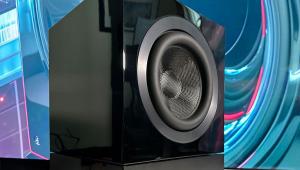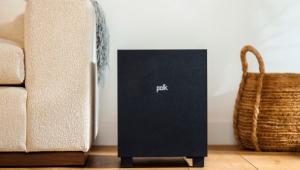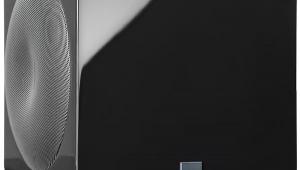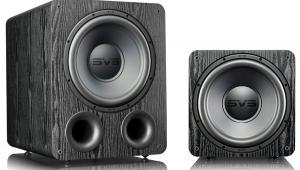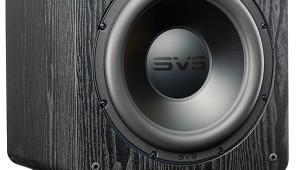D-Box SRP-230 Motion Platform and Standalone Series IV-BD Motion Controller
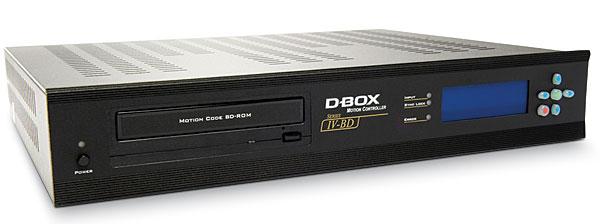
There are, and have been, lots of movements in the world: political (the Tea Party and Occupy Wall Street), social (abolition, women’s suffrage, and prohibition), artistic (Impressionism, Dadaism, and WTFism), and of course, bowel (but I digest…er, digress).
When it comes to subwoofers and speakers, air movement is of particular import. If you want loud, low bass, your woofers are going to have to compress a lot of air. For movies, it’s especially enjoyable when your subwoofer has enough spunk to cause the floor under your feet and the seat under your butt—and even your body’s chest cavity—to vibrate during those massive, over-the-top Hollywood explosions or through the low rumble of an earthquake. These are sensations that you feel more than hear. Not everyone is fortunate enough to have a subwoofer, such as JL Audio’s monstrous, plasterblasting Fathom f212 (reviewed in Home Theater, April 2012, and at HomeTheater.com) that can move everything in the room. There are devices, however—often called tactile transducers or low-frequency actuators—that are designed to be attached to your couch or chair and vibrate the furniture’s frame in correlation with the amount of bass in the audio signal.
What’s in D-Box?
Assisted vibration of furniture can certainly add to your perception of bass response, and—done judiciously—can make whatever you’re watching or listening to more entertaining and immersive. But it’s not just about deep bass. While watching a movie, you see all kinds of movement that has little, if any, connection to the bass in the soundtrack: planes fly through turbulence, automobiles bounce from potholes in the road, boats at sea rock back and forth, and, well…you get the picture...or the feeling. Even the best tactile transducer will sit motionless during these scenes if there is no bass present in the audio. To simulate the effect of a speed bump or a sudden stop requires something more—two things more, actually. First, you’d have to build a mechanism that can move your seat(s) in specific directions, such as up, down, or askew, rather than making them simply vibrate. Just as importantly, though, is that you’d have to create a “motion track” containing instructions that tell the mechanism when and how to move the furniture in conjunction with the onscreen action. Or, if all that seems like a lot of work, you could just get a D-Box SRP-230 Motion Platform to put under your existing sofa, along with a Series IV-BD Motion Controller to tell the SRP-230 what to do.
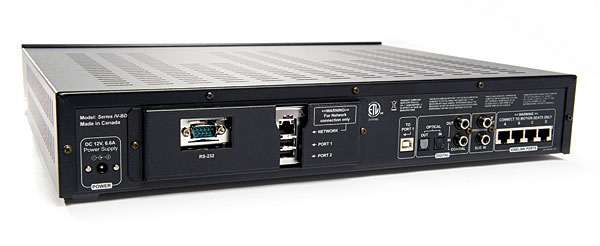
D-Box Technologies is a Canadian-based company that’s been working on the notion of motion for the last 12 years or so. Along with developing the hardware to provide three axis of movement for a home theater seat, D-Box has a staff of astute motion geeks who perform the intensive procedure of writing frame-by-frame motion instructions (or codes) to direct the hardware to interact with specific movies and TV shows. To date, they’ve created a library of motion codes for more than 1,000 titles, and D-Box points out that “prominent Hollywood studios have started embedding D-Box Motion Code on many Blu-ray format and theatrical releases.” In other words, several studios now include D-Box motion codes on their BD titles. But to get a better understanding of the motion code/motion hardware ecosystem, let’s start with the hardware itself.
Your Seat or Mine?
The muscle behind the movement in a D-Box-equipped seat consists of four, relatively small (slightly larger than a can of beer), incredibly powerful actuators. Each cylindrical actuator gets attached at or near a corner of the particular piece of furniture that’s going to shake your booty. Working in combination, the quartet of actuators is capable of creating three types of “intelligent movement”—what D-Box refers to as pitch, roll, and heave—that will move the sofa/love seat/recliner forward and backward, side-to-side, and up and down. Each actuator’s range of motion is quite amazing, with the overall span of up/down travel, for example, being at least 1.5 inches. (Try doing that with the typical vibrating tactile transducer!) To make movement seem realistic, the actuators are superfast and ultraprecise. As a result, the D-Box hardware can easily re-create the same kind of resonant vibrations in your home theater chair that you’d feel if there were a Fathom f212-caliber subwoofer in your system.
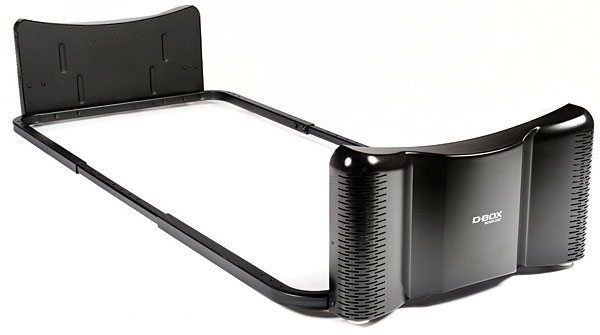
There are more than a dozen manufacturers of home-theater seating (including Acoustic Innovations, Cineak, CinemaTech, Fortress, and United Leather) that offer models of D-Box-ready home-theater seats. From the outside, they look and feel the same as a regular theater chair, but inside, the furniture has specifically designed install locations ready to accept D-Box actuators without requiring modifications. While this is great for people who are buying new home-theater seating, some of us have a fondness for the sofas we currently own. There are even quirky people, such as myself, who don’t personally like large, overblown, dedicated, theater seats. They’re just not my thing. Fortunately, D-Box makes a trio of Motion Platforms specifically designed to be used with your existing seating. The three adjustable platforms work exactly the same way and differ only in their minimum/maximum lengths and the maximum load capacity each is capable of handling.
Complete D-Box systems start at $8,700. For my system, D-Box sent the midmodel of its three Motion Platforms, the SRP-230 ($8,000) to try out with my own comfortably worn couch. In addition to being adjustable for use with sofa/love seats from 50 to 80 inches wide, the SRP-230 has a max load capacity—that’s people, pets, and seat combined—of 750 pounds. Although it has the same adjustable width, the SRP-330 ($10,000) can be loaded with 1,100 pounds. The narrower SRP-130 (also $8,000) is designed to accommodate single seats from 28 to 49 inches wide with a max load of 750 pounds. In most cases, your dealer will install the platform for you, but I have a battery-operated screwdriver and a tape measure, so D-Box let me have at it on my own.
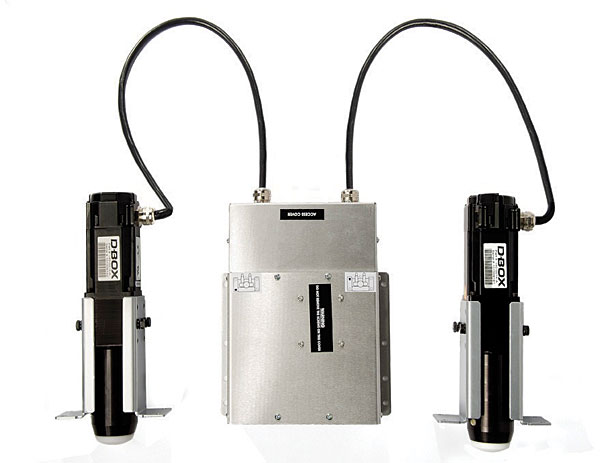
Screw It
For a device that’s as powerful, sophisticated, and capable of such precise movements, the SRP-230 is unbelievably simple to install and set up. The package consists of a pair of extremely rigid, long, narrow rails plus two 30-inch-wide (and equally strong) U-shaped rails. The straight rails slide into the ends of the U-shaped rails, forming a rectangle with rounded corners, the length of which is determined by how far the rails are slid into each other. In my opinion, the hardest part of the install was measuring the underside of my couch and making sure the long rails remained centered between the end rails as I tightened the set screws to keep everything in place. Rather than four individual actuators, the platform comes with two 30-inch-wide by 13.7-inch-tall black modules. Each 3.5-inch-thick module contains two actuators, the white rounded ends of which poke out of the bottom near the front and back. The left module gets bolted on to the outside of the left U-shaped end rail, while the right module is attached to the right end rail. The finished assembly makes a kind of high-tech cradle that is going to rock the couch. The second most difficult step—and it was only a bit unwieldy because I was doing the installation without the assistance of a second pair of hands—involved tipping over the couch and screwing the entire assembly to the wooden frame underneath the couch. While the bottom was upturned for easy access, I attached each module’s AC power cable and connected the modules with a single Cat5 cable. Another Cat5 is run from one of the modules to the Motion Controller. (Although regular Cat5 cable works, D-Box recommends using shielded Cat5 cables.)



